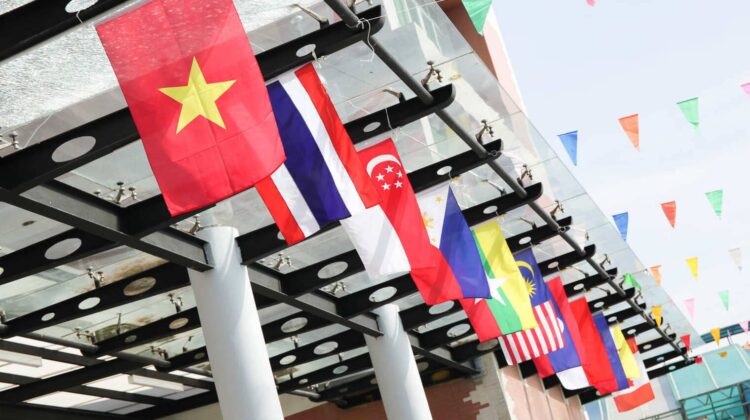
The Geopolitics of Asia: Navigating Regional Tensions and Alliances
Asia is home to diverse cultures, economies, and political systems, making it a complex and dynamic region in terms of geopolitics. Understanding the intricacies of regional tensions and alliances is crucial for countries seeking to navigate the political landscape and maintain stability in the area.
Historical Background and Context
Asia has a rich history of civilisations, empires, and colonisation that has shaped the region’s geopolitics. The legacy of colonialism, particularly by European powers, has led to the creation of artificial borders, which in turn has resulted in territorial disputes and ethnic tensions that persist to this day.
Furthermore, the Cold War era saw the division of Asia into two main spheres of influence: the communist bloc led by the Soviet Union and China, and the capitalist bloc led by the United States and its regional allies. These divisions continue to impact regional dynamics, with many countries forming alliances based on shared political or economic ideologies.
Key Regional Powers and Alliances
Several countries in Asia have emerged as regional powers with significant influence over their neighbours. These powers include China, India, and Japan, which have established themselves as economic powerhouses and important actors in the global political arena. Additionally, smaller countries like South Korea, Singapore, and Vietnam have become increasingly influential due to their strategic locations and economic successes.
Alliances in Asia often revolve around political, economic, or security interests. Some notable alliances and partnerships include:
- The US and its regional allies, such as Japan, South Korea, Australia, and the Philippines, form a network of security partnerships aimed at maintaining stability and countering potential threats.
- China’s Belt and Road Initiative (BRI) seeks to expand its economic and political influence by investing in infrastructure projects across Asia and beyond, fostering closer ties with participating countries.
- The Association of Southeast Asian Nations (ASEAN) is a regional organisation that promotes economic, political, and security cooperation among its ten member states, aiming to maintain regional stability and promote development.
Regional Tensions and Conflicts
Asia is home to several long-standing tensions and conflicts that have the potential to escalate and destabilise the region. Some of the most significant tensions include:
- Territorial disputes in the South China Sea between China and various Southeast Asian countries, fuelled by competing claims to islands and maritime resources.
- The ongoing conflict between India and Pakistan over the disputed region of Kashmir, which has led to several wars and continues to be a source of tension between the two nuclear-armed neighbours.
- The North Korean nuclear issue, which has resulted in heightened tensions between North Korea and the US, South Korea, and Japan, as well as concerns about regional proliferation.
- The rivalry between China and India, as both countries vie for regional influence and compete for resources and strategic partnerships.
The Role of External Actors
External actors, such as the US, Russia, and the European Union, play significant roles in Asia’s geopolitics. Their involvement often stems from strategic interests, including securing access to vital trade routes, maintaining military presence, and countering the influence of regional rivals.
These external powers engage with Asian countries through various means, including military alliances, economic partnerships, and diplomatic initiatives. Their involvement can both contribute to stability by providing security guarantees or exacerbate tensions by deepening existing rivalries.
Challenges and Opportunities for Regional Cooperation
Despite the numerous tensions and rivalries in Asia, there are also opportunities for regional cooperation and collaboration. By working together, Asian countries can address shared challenges and foster an environment conducive to peace, security, and development. Some of the key areas for potential cooperation include:
- Trade and Economic Integration. Asia is home to some of the world’s fastest-growing economies, and increasing trade and economic integration within the region can create opportunities for mutual growth and development. Initiatives such as the Regional Comprehensive Economic Partnership (RCEP), which includes ASEAN members and other key regional economies, can help reduce trade barriers and promote economic cooperation.
- Environmental and Climate Challenges. Asia faces significant environmental and climate challenges, including air and water pollution, deforestation, and the impacts of climate change. These issues often transcend national boundaries and require a coordinated regional approach to tackle them effectively. By sharing resources, knowledge, and best practices, Asian countries can work together to address environmental challenges and promote sustainable development.
- Counterterrorism and Security Cooperation. The region has experienced several terrorist attacks in recent years, highlighting the need for enhanced counterterrorism and security cooperation among Asian countries. By sharing intelligence, conducting joint training exercises, and collaborating on counter-radicalisation initiatives, regional actors can work together to combat the threat of terrorism and ensure the safety and security of their citizens.
- Humanitarian Assistance and Disaster Response. Asia is prone to natural disasters, such as earthquakes, typhoons, and tsunamis, which can have devastating impacts on communities and infrastructure. By pooling resources and expertise, countries in the region can improve their disaster preparedness and response capabilities, ensuring that they are better equipped to deal with emergencies and provide assistance to affected populations.
Navigating the Future of Asian Geopolitics
As Asia continues to grow in global importance, the need for regional cooperation and effective conflict resolution mechanisms becomes increasingly crucial. While tensions and rivalries will likely persist, there are also numerous opportunities for collaboration and mutual support among Asian countries.
To navigate the complex landscape of Asian geopolitics, countries must adopt a balanced approach that recognises their shared interests and the importance of maintaining regional stability. By engaging in dialogue, building trust, and fostering cooperation, Asia can overcome its challenges and unlock its vast potential for growth and development.
In conclusion, understanding the intricacies of Asia’s geopolitical landscape is essential for countries seeking to maintain stability and promote prosperity in the region. By addressing shared challenges, fostering cooperation, and engaging in constructive dialogue, Asian countries can navigate the complexities of regional tensions and alliances, ensuring a brighter future for the continent and its people.
Author: Donglu Shih
Expert in Asian culture and economics. She collaborates with major companies in the field of international relations. Collaborates with The Deeping on Asian political topics

